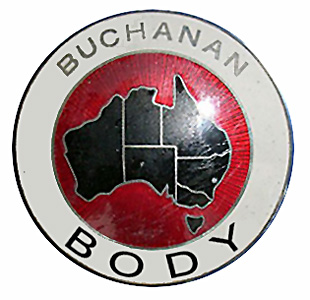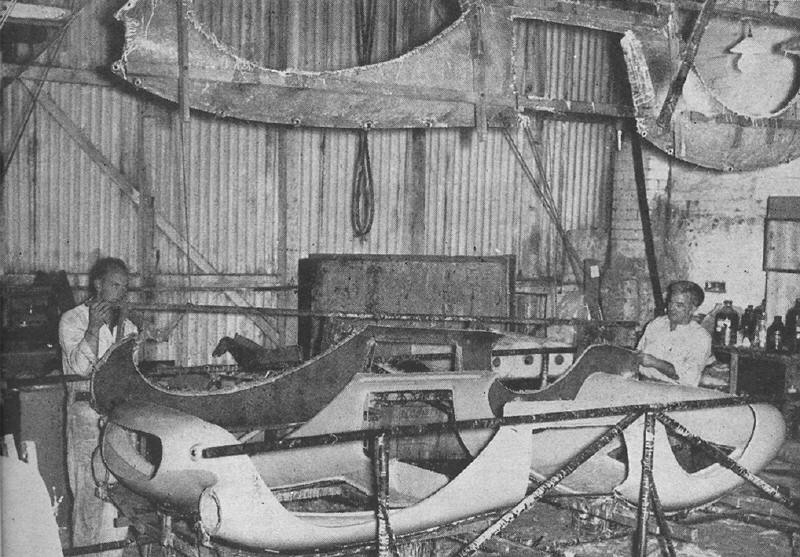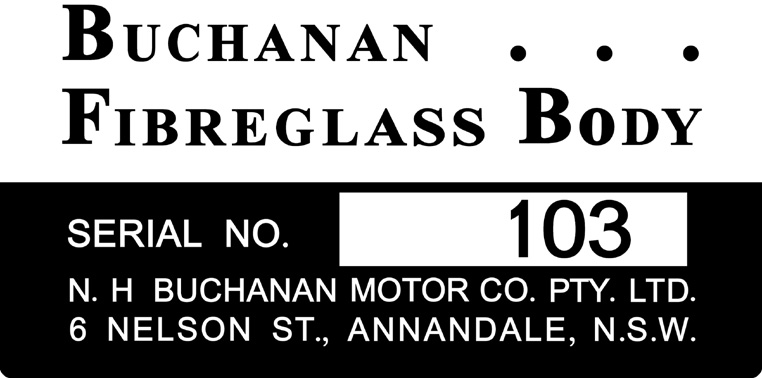|
article
from "Restored Cars" 104
The first Australian fibre-glass car body project to sell strongly
enough to become financially rewarding was the Buchanan, an after-market
sports roadster for fitting to the smaller sports car chassis such as M.G.
T series, Singer, Austin A40 and others with wheelbases measuring between
7 ft. 3 in. and 8 ft.
It was the promotion of Nat Buchanan, a TV/radio manufacturer and motor
sport competitor who hit on the idea of using the former Kangaroo Stable
Aston-Martin DB3S competition car of Tom Sulman as the buck for his master
moulds.
This was but one thrust of his two-pronged attack on the market as, when
released in 1956, it was to partner an earlier project, a coupe intended
to be sold as a complete car. Mounted on a chassis of boxed side rails
with five tube cross-members, designed by Arthur Rizzo, this coupe had a 7
ft 7 in. wheelbase and a transverse leaf ifs.
The car made use of Enfo mechanicals and was powered by the four-cylinder
Consul motor, tweaked to give 70 bhp., although the Zephyr Six could be
specified at extra cost. As Nat had been campaigning a Zephyr in sporting
events, the motor of which Wal Warnerford had waved his magic wand over to
transform the gentle zephyr into a whirlwind, it was not surprising that
the Enfo products were his choice. The N.H. Buchanan Motor Co., which
shared the premises of Electrosound, in Nelson Street, Annandale, N.S.W.,
also marketed the Warnerford conversions for Consul and Zephyr motors.
The whole coupe body was produced in one piece so the mould had to be
built up from seven sections to allow the completed body to be extracted.
There was no external boot lid, merely a spare wheel access door, so any
luggage had to be reached via the interior. This coupe, with 2 + 2
seating, had a 10 gal. fuel tank, weighed 16 cwt., had a practical 7 in.
of ground clearance but appears not to have been rushed by an eager and
grateful public; only the one having been constructed it is believed.
The roadster body kit for customer fitting, however, did meet with wide
approval as the lighter weight was a great plus for sporting drivers; the
weight of a M.G. T.D., for example, being reduced from 17 1/4 cwt. to 14
1/2 by the fitting of the Buchanan body. In 1957 Nat's own car, the
Buchanan M.G., was claimed to be the lightest and fastest T.D. then
racing, winning at six out of ten starts. Top speed of this car was 103
mph. and its time for the standing start 1 /4 mile was 17.2 seconds.
At £255 the body offered was very basic, having only doors, bonnet and
boot lid fitted but no screen, floor-boards, seats, instruments, body
hardware, electricals or painting; these costing a further £176. Other
stages could be had at increased cost, up to rolling form mounted on a
Rizzo-designed twin-tube ladder frame fitted with M.G. coil independent
front suspension. For outright competition use a very stark version,
having only one door as required by racing regulations and the very
minimum of everything else could also be purchased.
Nat also came up with a hard-top for those, or their lady friends, seeking
extra comfort and also introduced a chassis frame designed to accept
Holden components. A narrowed front suspension subframe would bolt in and
the spring mountings at the rear were sited to suit the Holden semi
elliptics. A package of this frame, body, i.f.s. and a narrowed rear axle
was offered at a cost of £395.
More than one hundred bodies had been sold by 1958 when the Buchanan
moulds were sold to Jennens & Simmonds of Parramatta Road, Croydon. who
went on to produce about fifty further units. The bodies built by Buchanan
are distinguished from those produced by J. & S. in having a numbered body
plate attached.
|



